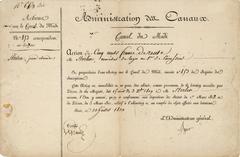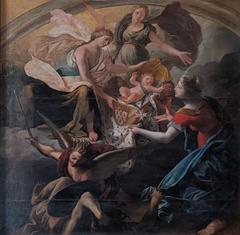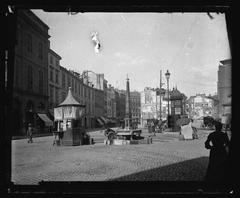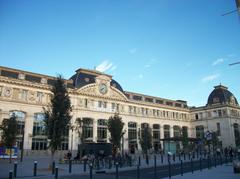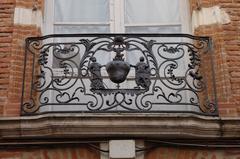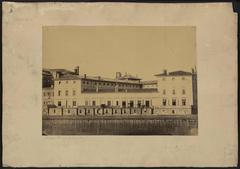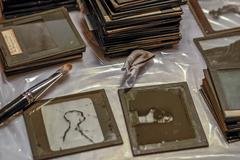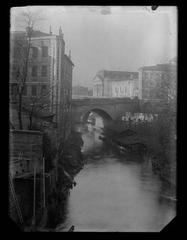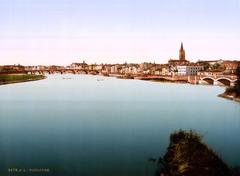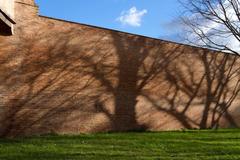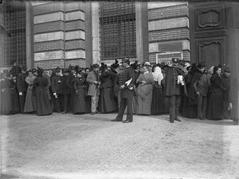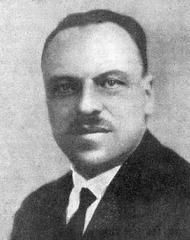Hôtel Jean Catel Toulouse Visiting Hours, Tickets, and Historical Site Guide
Date: 14/06/2025
Introduction
Nestled in the heart of Toulouse, the Hôtel Jean Catel is a striking testament to the city’s medieval and Renaissance past. This guide provides visitors with comprehensive information on the mansion’s history, architectural features, current visiting policies, and its role within the vibrant urban fabric of Toulouse. Whether you’re a history enthusiast, architecture lover, or planning a cultural itinerary, this article will help you make the most of your exploration of Toulouse’s historical sites.
Table of Contents
- Introduction
- Historical Overview and Architectural Evolution
- Significance within Toulouse’s Civic and Urban Identity
- Visiting Information: Hours, Tickets, and Accessibility
- Travel Tips and Nearby Attractions
- Visual Resources and Media
- Frequently Asked Questions (FAQ)
- Conclusion and Visitor Advice
- References and Further Reading
Historical Overview and Architectural Evolution
Origins and Development
The Hôtel Jean Catel was constructed in the 15th century by Jehan Catel, a prominent merchant whose name and status are closely tied to the building’s legacy (Monumentum). At a time when Toulouse was recovering from devastating fires, the shift from timber to brick construction became a defining element of the city’s architecture, earning it the moniker “La Ville Rose” (World Travel Guide). The mansion’s façade, with its distinctive pink brick, pilastered entrances, and mullioned windows, exemplifies this transition and reflects a blend of Gothic and early Renaissance influences.
Transformations and Conservation
While the original design included a prominent tower and sharp corner—a marker of its medieval roots—19th-century modifications softened some of these features, introducing a rounded corner that adds to its layered architectural history (Monumentum). The façade facing the courtyard has been protected as a historic monument since 1950, ensuring preservation of its most significant elements (POP Culture).
Significance within Toulouse’s Civic and Urban Identity
Role of Hôtels Particuliers
The proliferation of hôtels particuliers like the Hôtel Jean Catel during the late Middle Ages and Renaissance symbolized the city’s economic prosperity, largely due to the pastel (woad) trade (Toulouse Brique). Wealthy merchants and parliamentarians commissioned these grand residences as both statements of status and venues for social, political, and cultural gatherings. The Hôtel Jean Catel, while more understated than some contemporaries, played a part in this transformation and remains emblematic of Toulouse’s distinctive urban heritage (French Moments).
Urban Integration
Located at 6 Place Saint-Étienne, the Hôtel Jean Catel is centrally situated among Toulouse’s historical and cultural landmarks, such as the Saint-Étienne Cathedral and the Place du Capitole (Toulouse Tourisme). Its presence within the protected historic core highlights the concentration of wealth and civic power in the area during the Renaissance and maintains its relevance in the city’s contemporary identity.
Visiting Information: Hours, Tickets, and Accessibility
Current Visiting Policy
- Interior Access: The Hôtel Jean Catel is privately owned and is not open for regular interior visits. However, its façade and architectural details can be freely admired from Place Saint-Étienne (Toulouse Brique).
- Special Events: On occasion, such as during European Heritage Days (Journées du Patrimoine), the mansion may open its doors for guided tours. These rare events are announced through official channels (Monumentum).
- Tickets: No ticket is required to view the exterior. For special events, tickets or reservations may be necessary and are typically available through the Toulouse tourist office.
- Accessibility: The exterior is accessible via pedestrian-friendly streets, though uneven cobblestones may challenge visitors with mobility impairments. Interior accessibility depends on event-specific arrangements.
Virtual and Guided Experiences
While interior access is uncommon, virtual tours and extensive photo archives are available online. Many walking tours of Toulouse’s Old Town include the Hôtel Jean Catel as a key point of interest (France Voyage; Taste of Toulouse).
Travel Tips and Nearby Attractions
Practical Tips
- Location: Central Toulouse, within walking distance of the Capitole, Saint-Étienne Cathedral, and Basilique Saint-Sernin (Travelsewhere).
- Best Time to Visit: Early morning or late afternoon for optimal lighting and fewer crowds.
- Duration: 10–20 minutes for exterior appreciation; longer if included in a walking tour.
- Footwear: Comfortable shoes recommended due to cobblestone streets.
- Photography: The façade’s brickwork and tower make excellent photo subjects, especially in soft natural light.
Nearby Historical and Cultural Sites
- Eglise Notre-Dame-de-la-Daurade: Noted for its ancient vestiges and riverside location (Gralon).
- Ancienne Maison de Calas: A site of Enlightenment history and commemoration of the Calas affair.
- Rempart Médiéval: Medieval rampart remains offer insight into the city’s defense strategies.
- Ancienne Église Saint-Pierre-des-Cuisines: A Romanesque church and concert venue.
- Capitole de Toulouse: The city’s iconic town hall and opera house (The Crazy Tourist).
- Basilique Saint-Sernin: A UNESCO World Heritage Site and outstanding Romanesque basilica.
- Garonne River and Pont Neuf: Perfect for scenic walks and sunset views.
- Quartier Carmes and Saint-Etienne: Atmospheric neighborhoods brimming with cafés, boutiques, and historical ambiance.
- Local Markets: The Saint Aubin Market is a Sunday highlight for regional produce and local culture (Taste of Toulouse).
Visual Resources and Media
For high-quality images and architectural details, visit Wikimedia Commons: Hôtel Jean Catel (Toulouse) Images. Use alt text such as “Hôtel Jean Catel façade in Toulouse historical sites” to enhance accessibility and SEO.
Frequently Asked Questions (FAQ)
Is the interior of Hôtel Jean Catel open to visitors?
No, regular interior access is not available. Occasional openings occur during special events like European Heritage Days (Monumentum).
Are guided tours offered?
While dedicated tours of the mansion are rare, many city walking tours include Hôtel Jean Catel as a highlight (France Voyage).
What are the visiting hours?
The exterior can be viewed at any time. There are no official hours since the building is not open to the public.
Is there an entrance fee?
No, viewing the exterior is free of charge.
Is the site accessible for visitors with disabilities?
The surrounding area is pedestrian-friendly, but cobblestones may pose challenges. Check with the Toulouse tourist office for details on special event accessibility.
Conclusion and Visitor Advice
The Hôtel Jean Catel stands as a vital link to Toulouse’s rich history, offering an enduring example of the city’s architectural and civic evolution. While interior access is limited due to private ownership, its preserved façade and central location make it a rewarding stop on any exploration of Toulouse’s historical core. Visitors are encouraged to combine an exterior visit with guided walking tours and nearby attractions to fully appreciate the depth and diversity of Toulouse’s heritage.
For the latest information on special events, guided tours, and accessibility, consult official resources or consider using the Audiala app for curated travel guidance and real-time updates.
References and Further Reading
- Monumentum
- POP Culture
- French Moments
- Gralon
- World Travel Guide
- Toulouse Brique
- Toulouse Tourisme
- France Voyage
- The Crazy Tourist
- Travelsewhere
- Taste of Toulouse
- Wikimedia Commons

